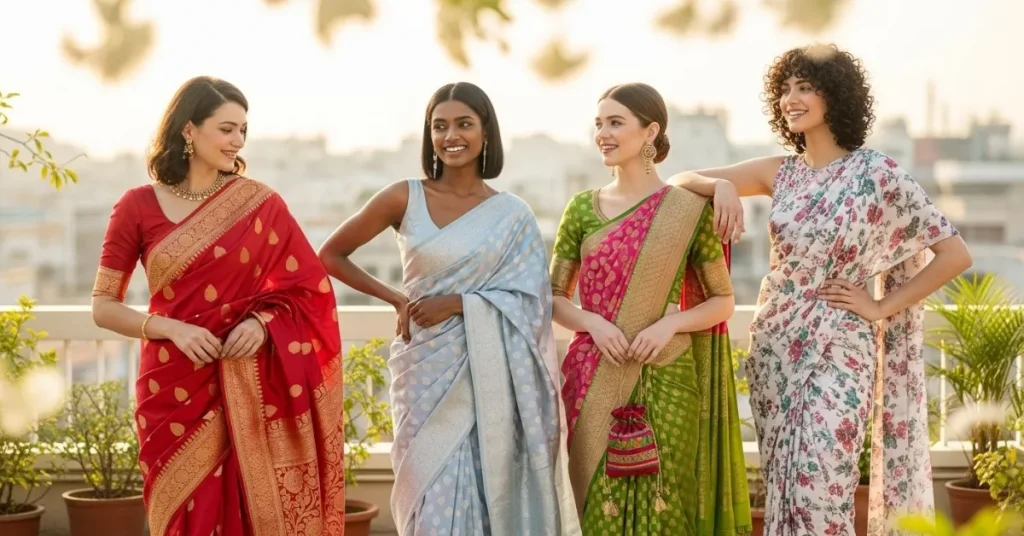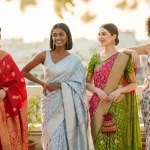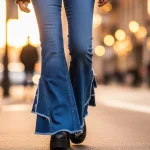If you’ve ever admired someone gracefully walking in a saree and wondered, “How do they even do that?” his guide is for you. Wearing a saree looks elegant and effortless, but for beginners, it can feel like folding a 6-yard puzzle.
Don’t worry it’s easier than it looks once you get the hang of it. In this simple guide, you’ll learn exactly how to wear a saree step by step, discover different draping styles, and get fabric-specific tricks that’ll help you avoid slips or uneven pleats.
If you’re dressing for your first traditional event or experimenting with modern saree looks, this article will help you feel confident and comfortable.
What You Need Before You Start
Before you start draping, make sure you have the right essentials ready. The Times of India suggests preparing these basics:
1. Petticoat
Your petticoat should match your saree’s color and fit snugly at the waist. For heavier sarees like silk, pick a satin or shaping petticoat it gives structure and helps the saree stay in place.
2. Blouse
Choose a blouse that fits perfectly around your bust and shoulders. Experiment with sleeve lengths, back cuts, and closures to match the occasion or style.
3. Accessories
Keep these handy:
- 5–6 safety pins
- A full-length mirror
- Footwear (wear it before draping to get the correct length)
- Ironed saree (for neat pleats)
- Optional: pleat clips or a waist belt
Step-by-Step: Classic Nivi Drape
This is the most common and beginner-friendly drape elegant, balanced, and perfect for any event.
Step 1 — Wear Blouse and Tie Petticoat
Start by putting on your blouse and tying the petticoat firmly at the waist. The knot should be tight but comfortable this is your saree’s anchor.
Step 2 — Tuck and Wrap the First Round
Hold one end of the saree (the plain end, not the pallu) and tuck it into your petticoat, starting from your right side. Make one full wrap around your waist from right to left, ensuring the lower edge grazes the floor evenly.
Step 3 — Make and Secure the Pleats
Now, take the remaining saree and create 5–8 pleats, each about 5 inches wide. Gather them neatly, making sure they’re even. Tuck the pleats into the petticoat just below your navel and pin them together inside for security.
Step 4 — Drape and Pleat the Pallu
Take the other end of the saree (the pallu) and bring it around your back to your left shoulder. You can leave it open for a flowing look or pleat it neatly and pin it to your blouse.
Adjust its length to reach your knees or slightly below for a balanced look.
Step 5 — Final Adjustments + Walk Test
Adjust your pleats, check the length, and take a short walk to make sure nothing’s pulling. Pro tip: always wear your shoes before draping, so the saree sits at the right height.
Fabric & Fit Tweaks
Different fabrics behave differently when draped, and knowing this makes a big difference.
- Cotton/Linen Sarees: Best for summer and casual wear. They’re crisp but may wrinkle easily use more pins for structure.
- Chiffon/Georgette: Lightweight and flowy, ideal for parties or evening looks. They fall beautifully without bulk.
- Silk Sarees: Luxurious and heavy perfect for weddings. Use extra pins and a structured blouse for better balance. Try a satin or shaping petticoat underneath for support.
11 Popular Saree Draping Styles
Inspired by Cbazaar and traditional Indian fashion, here are twelve timeless saree draping styles you can experiment with. Each has its own charm, history, and regional influence.
If you prefer a classic look or something more modern, there’s a drape for every occasion and personality.
1. Nivi Style (The Classic Drape)
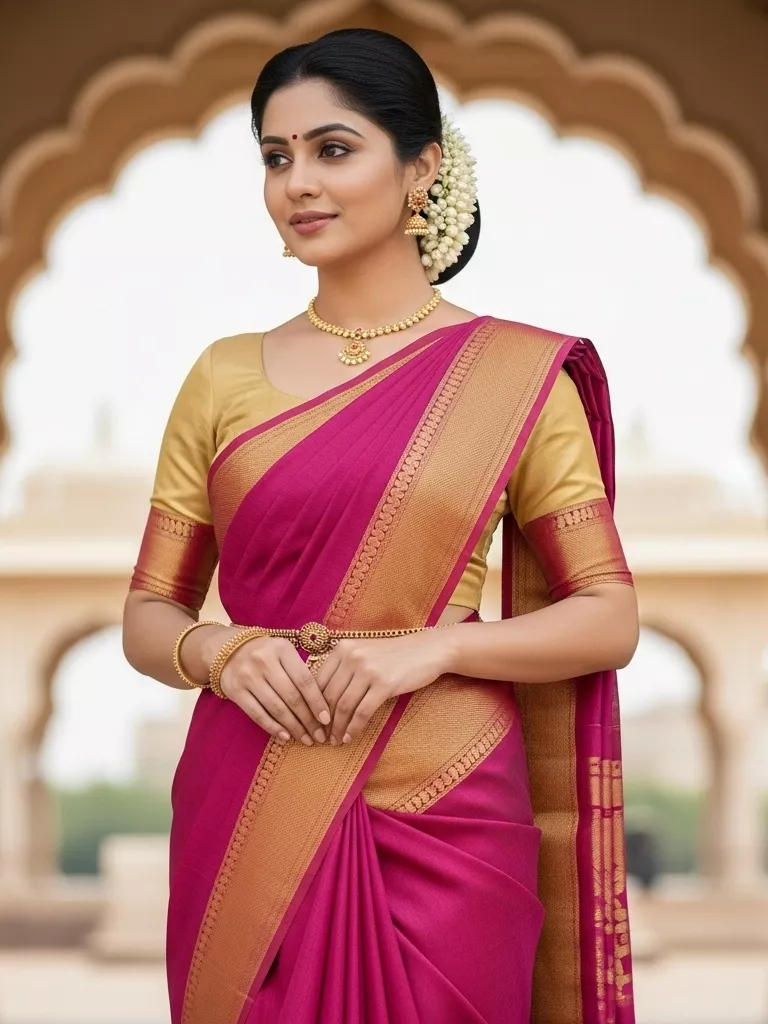
Originating from Andhra Pradesh, the Nivi style is the most common and beginner-friendly saree drape. The saree is tucked neatly around the waist, pleated in front, and the pallu is draped over the left shoulder.
It’s perfect for everyday wear, office looks, or festive occasions because it’s simple yet elegant.
2. Bengali Style
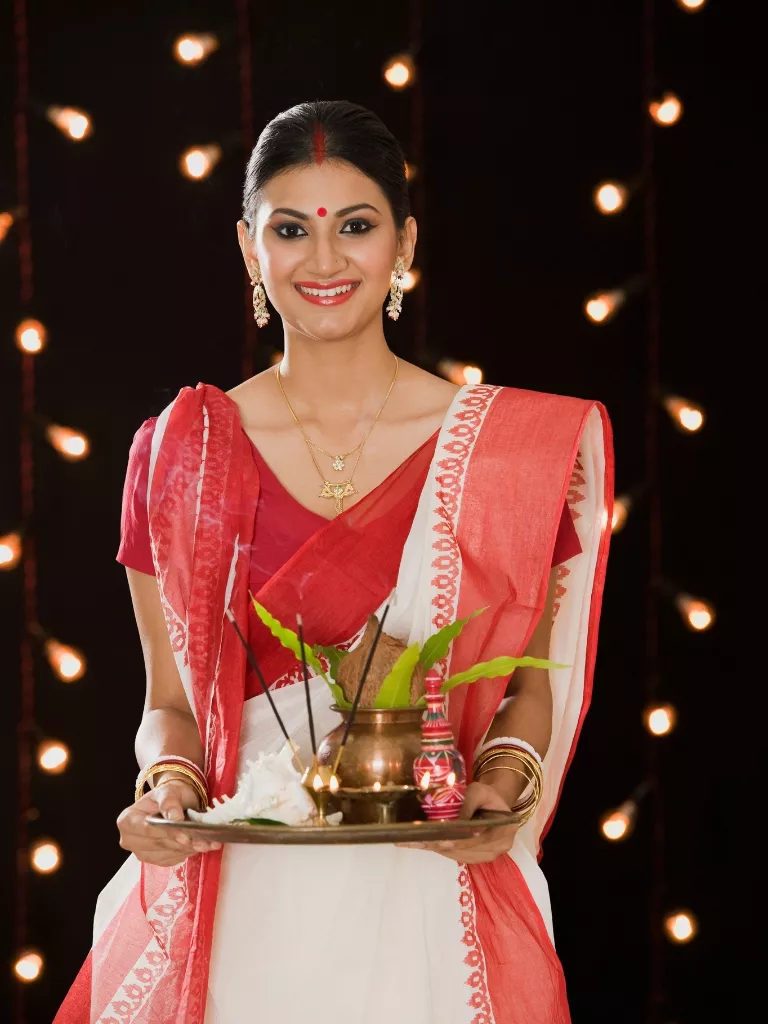
Known for its cultural grace, the Bengali drape uses wide pleats and a flowing front pallu that’s often pinned to the opposite shoulder.
Traditionally worn with puff-sleeved blouses and key accessories, it gives a regal, old-world charm especially suitable for Durga Puja or festive celebrations.
3. Gujarati Style (Seedha Pallu)
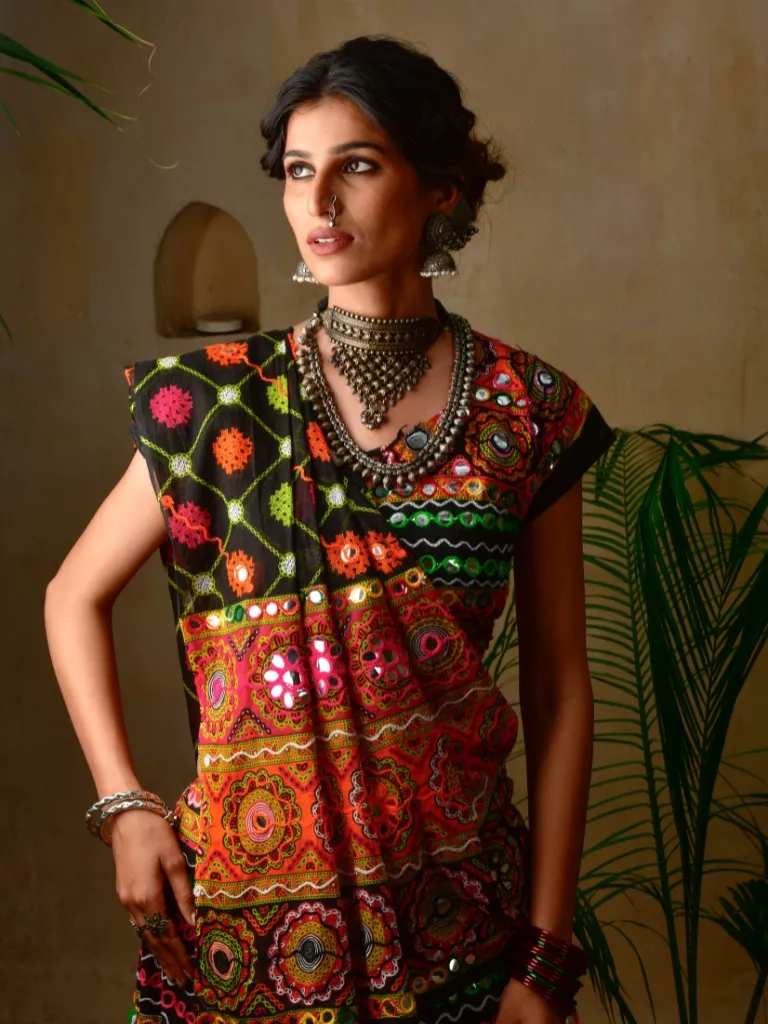
In the Gujarati style, the pallu comes from the back and is brought across the front, covering the torso.
This drape showcases the saree’s intricate pallu designs beautifully and adds a touch of drama. It’s commonly seen in weddings and festive events.
4. Maharashtrian Style
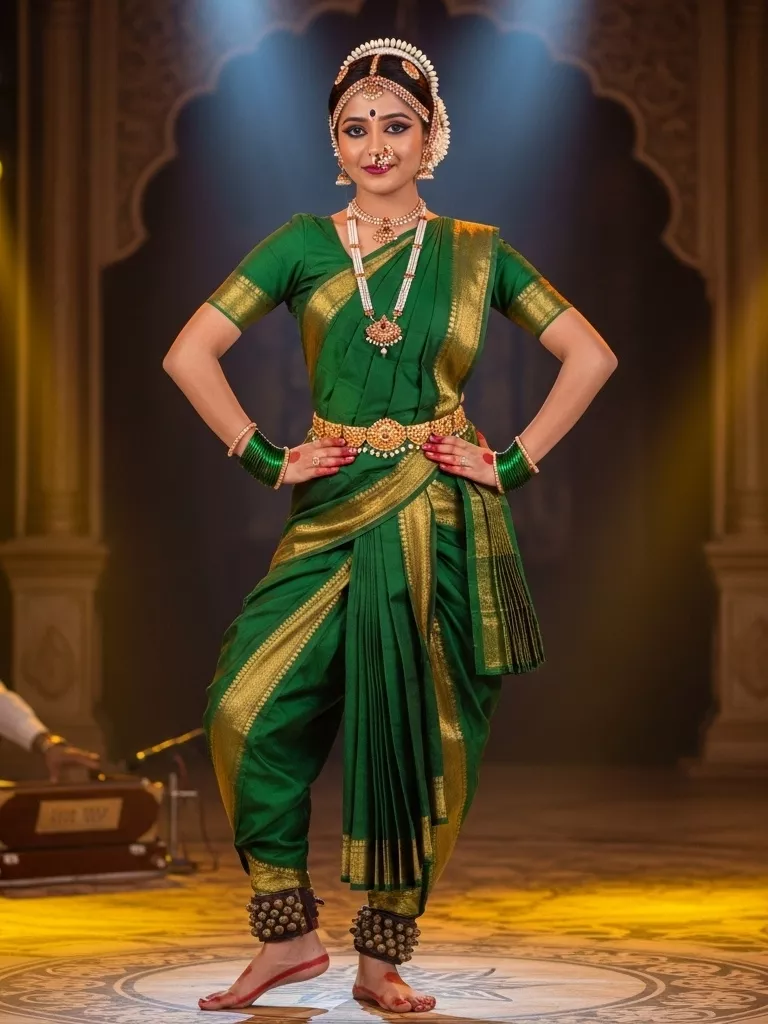
This drape resembles a dhoti and is traditionally worn without a petticoat. The saree’s lower portion is passed between the legs and tucked at the back, allowing free movement.
Typically worn with a short-sleeved blouse and nose ring, it’s ideal for traditional functions and classical dance performances.
5. Kerala Mundum Neriyathum
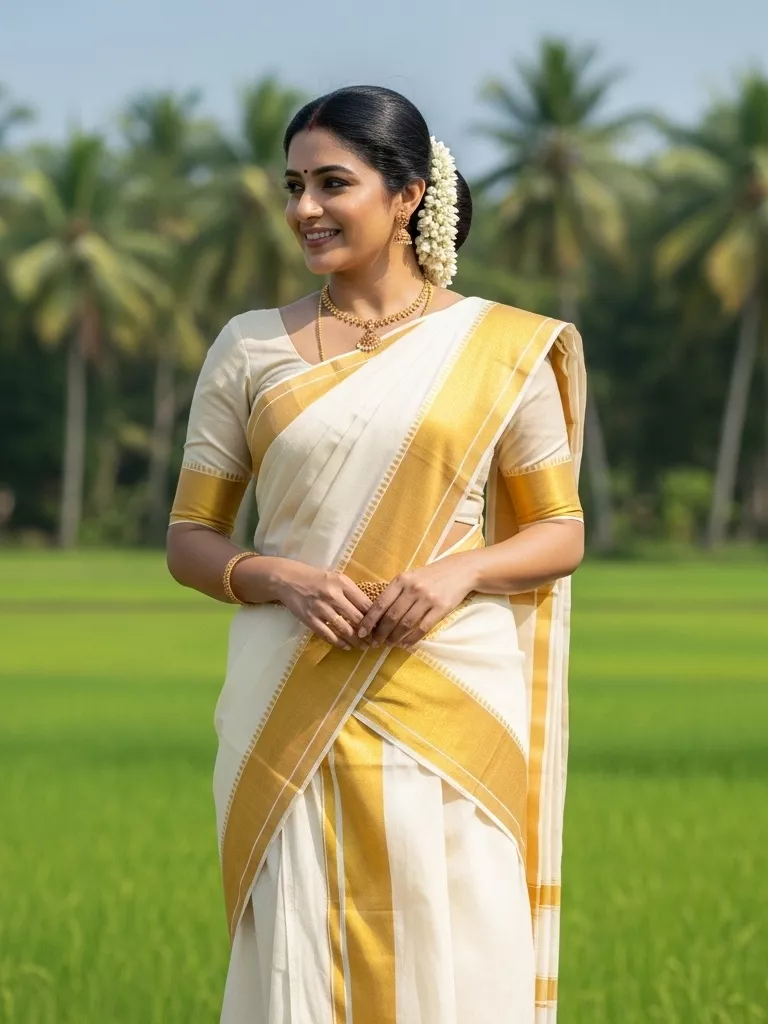
A graceful two-piece drape from Kerala, usually in off-white or cream with golden borders.
The bottom piece (mundu) is wrapped around the waist, and the top piece (neriyathu) is draped across the shoulder. Simple, elegant, and lightweight perfect for humid weather and cultural occasions.
6. Lehenga Style
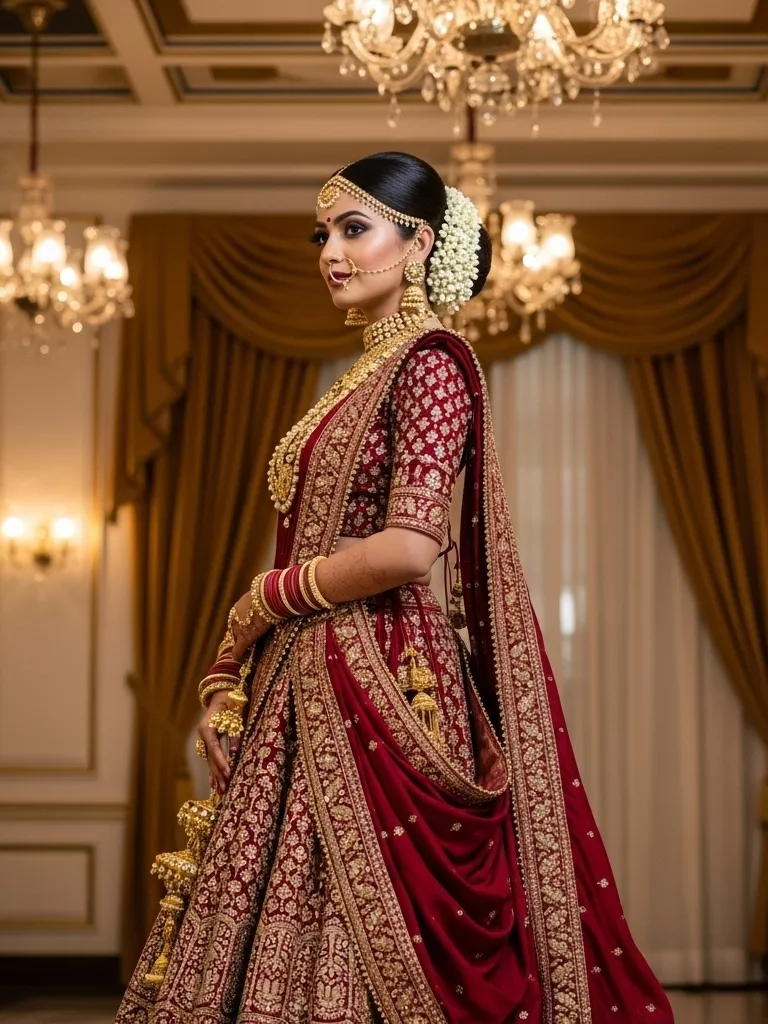
This style gives the illusion of a lehenga or long skirt. Instead of making front pleats, the saree is wrapped with multiple small pleats all around the waist, and the pallu is draped like a dupatta.
It’s a favorite for brides and partywear looks due to its luxurious appeal.
7. Indo-Western Style
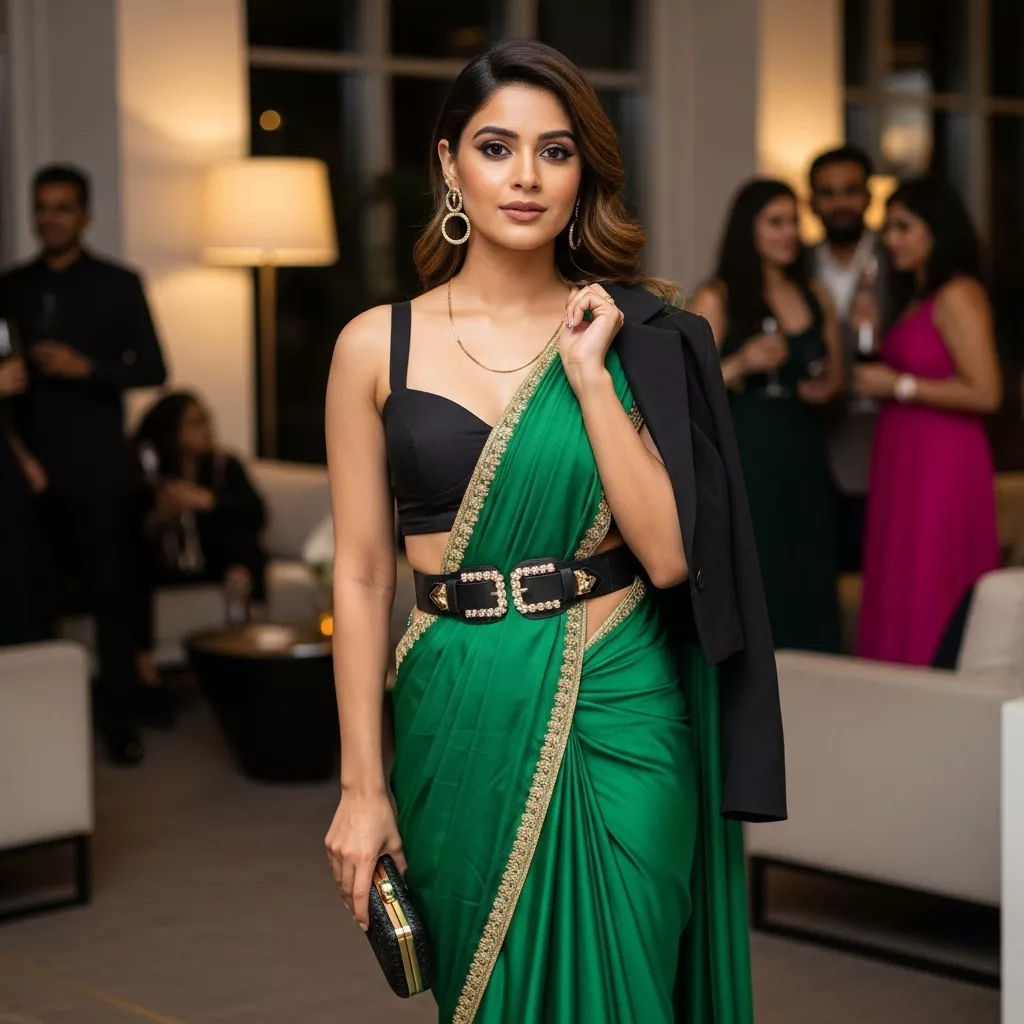
A modern take on the traditional saree, this fusion style often pairs the saree with a belt, jacket, or crop top. Pre-stitched or ready-to-wear versions are popular among younger generations.
Ideal for cocktail parties or formal events where you want a stylish, contemporary twist.
8. Pre-Stitched Saree
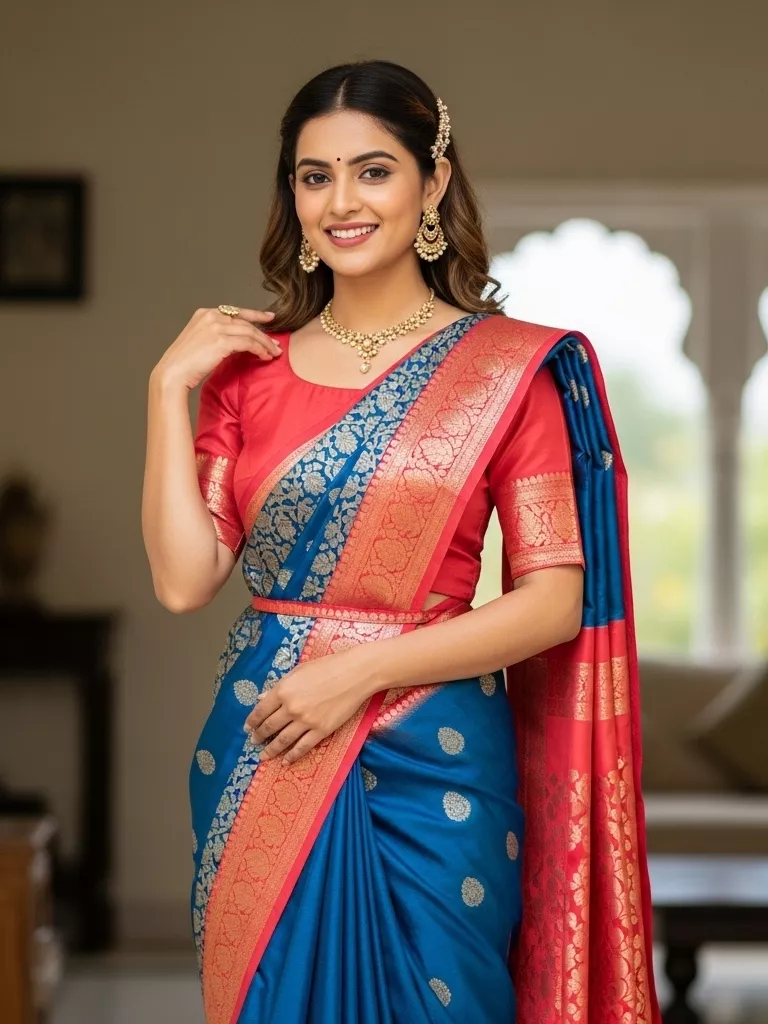
The easiest and fastest drape for beginners. The saree comes pre-pleated and stitched at the waist you just have to slip it on like a skirt and adjust the pallu. It’s perfect for those who love the saree look but don’t want to spend time draping and pleating.
9. Belted Drape
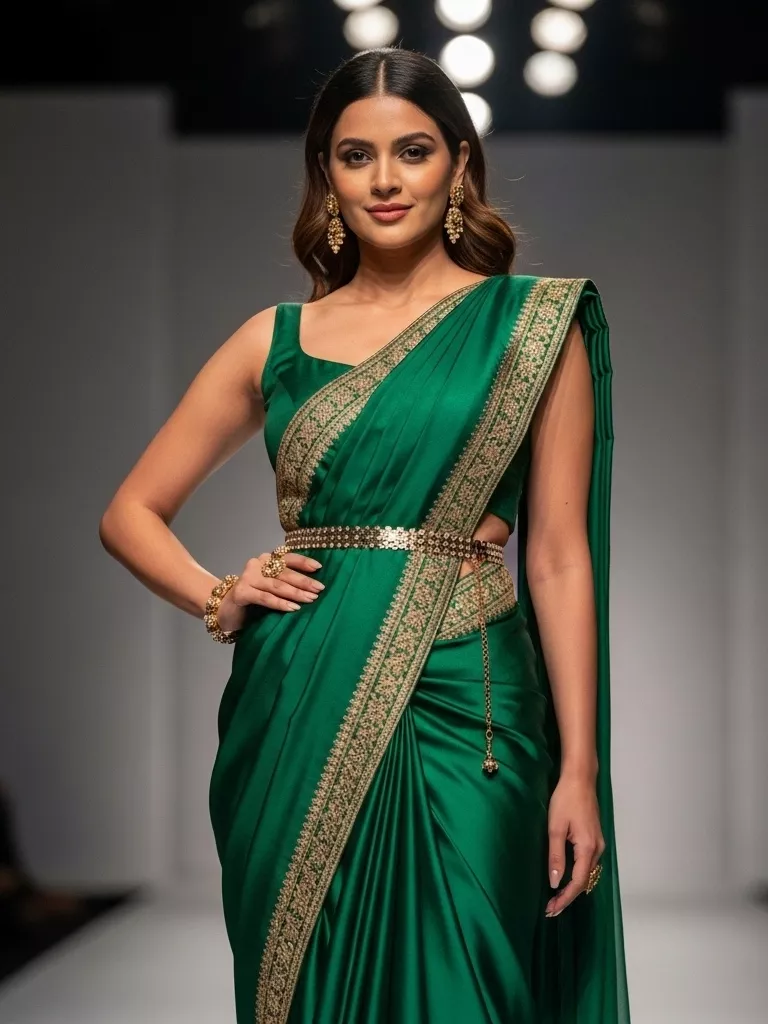
A trendy and functional variation where a slim or ornate belt is worn over the saree, cinching the waist and keeping the pleats in place. This style adds definition and gives a chic, modern finish often seen on fashion runways and red carpets.
10. Gujarati Front-Fall
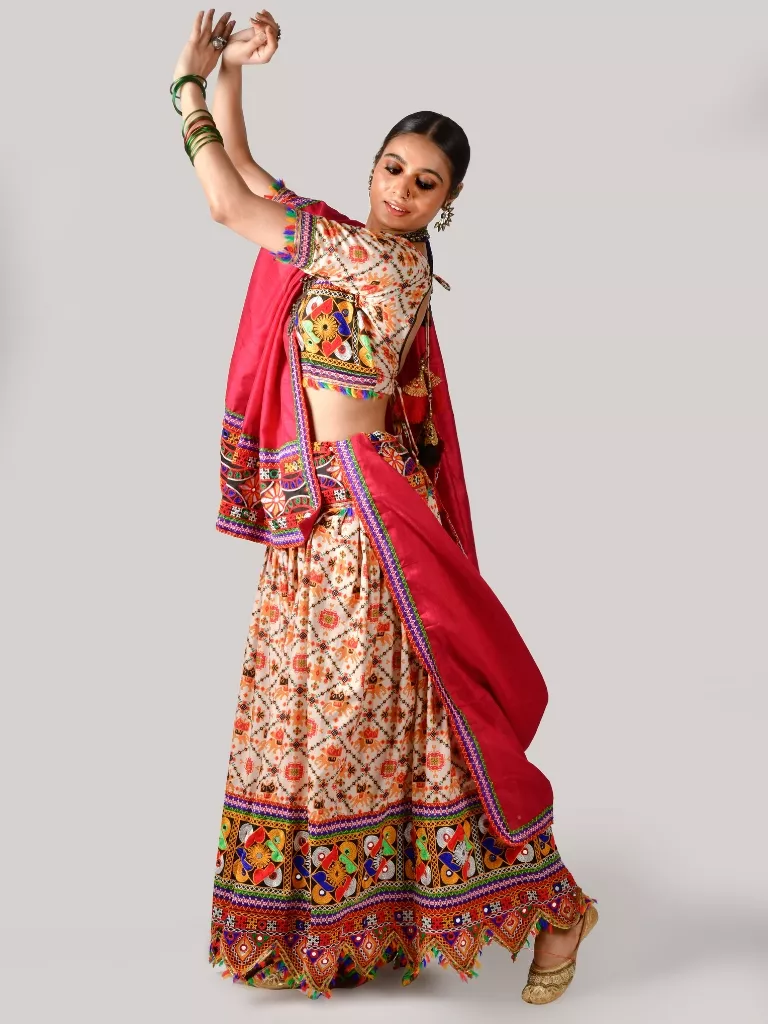
A dramatic version of the Gujarati style, this drape brings the pallu diagonally across the front, spreading it gracefully. It’s perfect for showcasing embroidered or sequined pallus, especially in festive or wedding settings.
11. South Indian Madisar
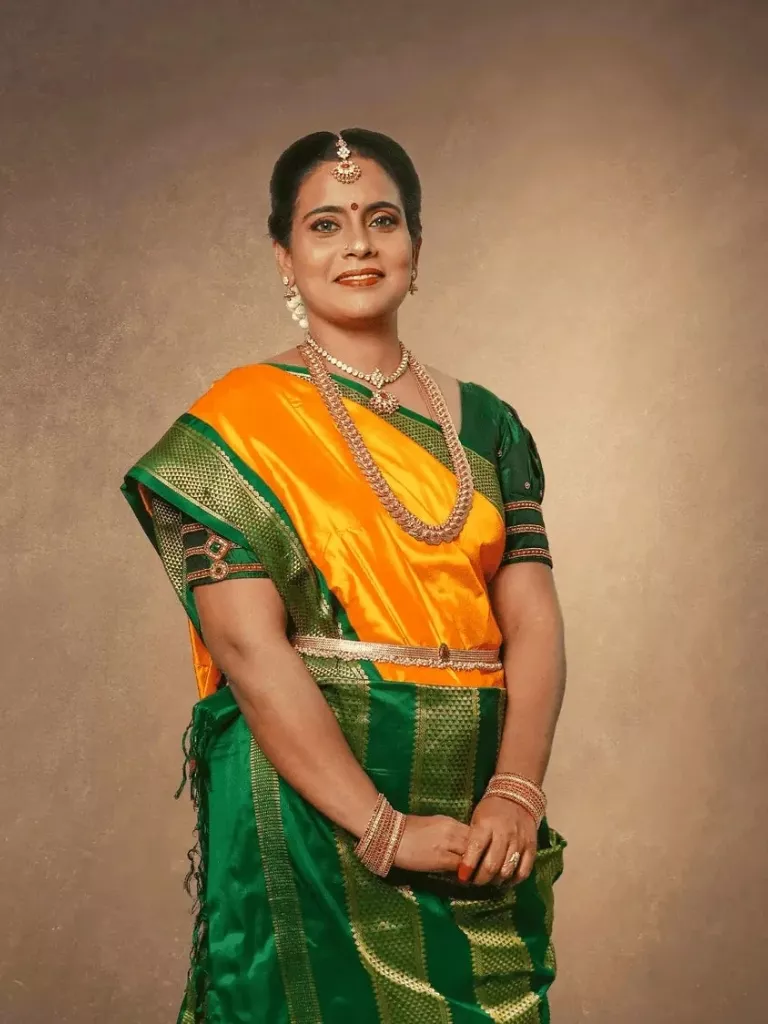
Traditionally worn by Tamil Brahmin women during rituals and festivals, the Madisar uses a 9-yard saree and involves complex wrapping, including pleats tucked both front and back.
It symbolizes cultural heritage and modesty while allowing easy movement.
Common Mistakes & How to Avoid Them
- Slipping Pallu: Use pins or a small brooch to keep it in place.
- Uneven Pleats: Practice in front of a mirror and use pleat clips.
- Loose Petticoat: Always tie it tight enough to hold weight.
- Too Few Pins: Use enough pins to secure pleats and corners.
- Wrong Footwear: Always wear shoes first before adjusting length.
Styling Tips Blouses, Jewelry, Footwear, Makeup
Your saree isn’t just about draping it’s a full look. Try these combinations for different occasions:
- Casual or Workwear: Cotton saree + simple blouse + studs or hoops.
- Festive Events: Silk saree + embroidered blouse + gold or jhumka earrings.
- Weddings: Heavy saree + statement jewelry + embellished clutch.
- Modern Look: Belted saree + minimal jewelry + smoky eyes.
Quick Fixes & Emergency Repairs
- Re-pin your pallu if it slips.
- Use a safety pin to hold pleats together at the waist.
- If you’re in a hurry, secure the drape with a slim belt for extra support.
- Keep an extra pin and compact mirror in your purse for last-minute touch-ups.
Which Saree Draping Style Matches Your Personality?
Your Saree Style Match Is:
Conclusion
Now you’re ready to move gracefully and confidently whether it’s your first saree day at college or a big family wedding. Remember, wearing a saree isn’t just about fabric it’s about attitude, poise, and confidence.
Once you master the basics, you’ll find yourself experimenting with colors, drapes, and modern twists like a true saree queen.
